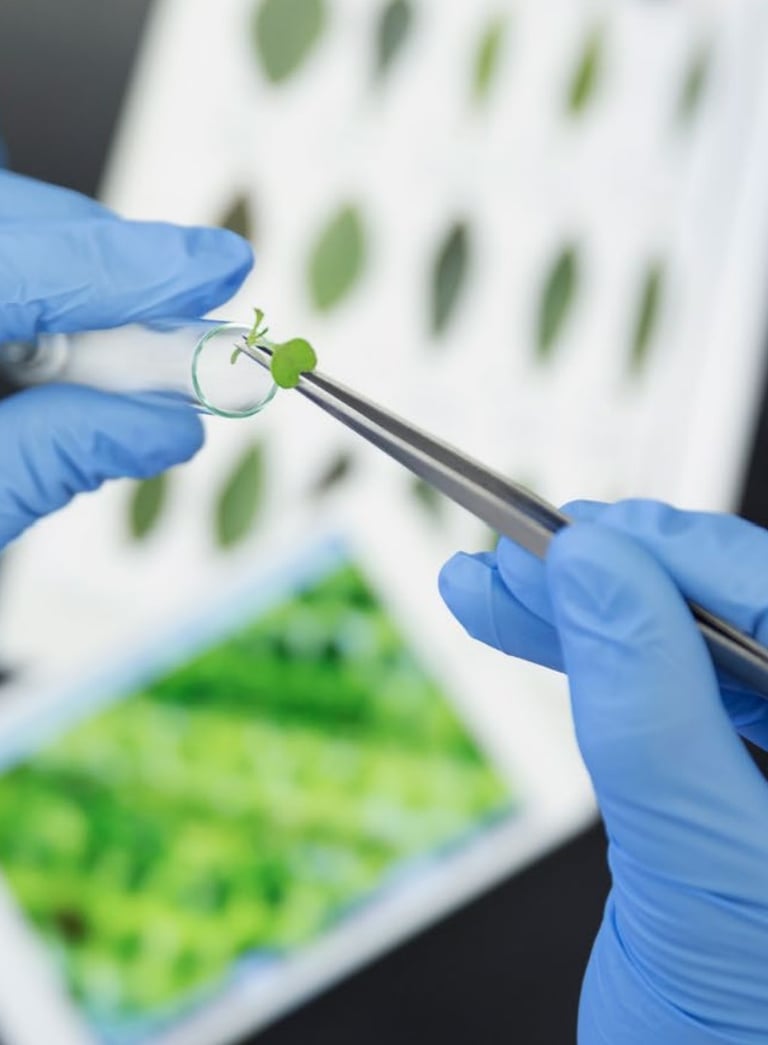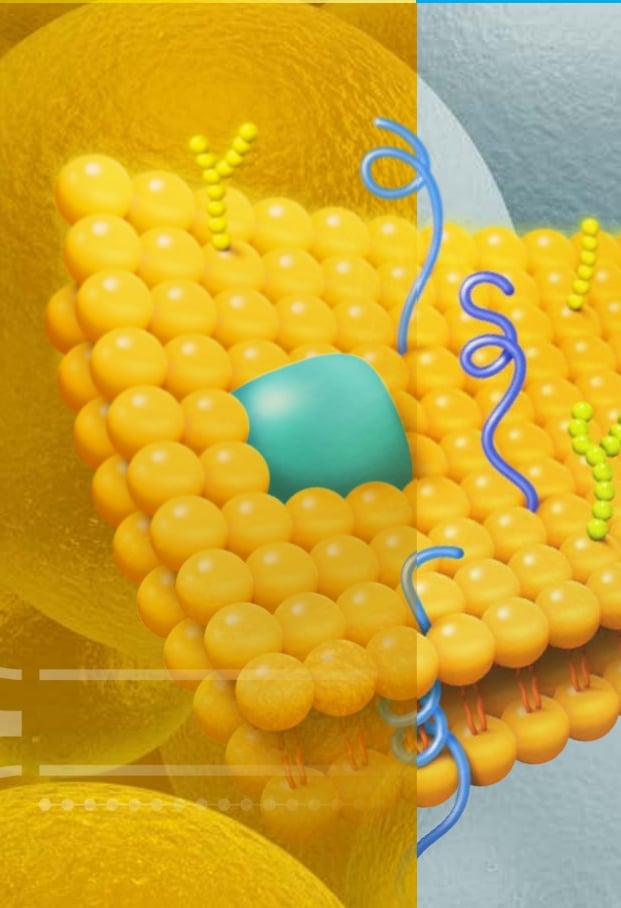
Our Services
Proteomics mass spectrometry using Orbitrap technology is a powerful and widely used approach for studying the proteome of biological samples. The Orbitrap mass spectrometer provides high resolution, high sensitivity, and accurate mass measurements, making it an ideal tool for identifying and quantifying proteins in complex biological mixtures.
1. Protein Identification
- Shotgun Proteomics: Using LC-HRMS/MS, proteins are digested into peptides. The resulting fragmentation patterns allow for the identification of peptides, which can then be matched to known protein sequences..
2. Quantitative Proteomics
- Label-Free Quantification (LFQ): The LC Orbitrap HRMS can be used for label-free quantification, where the intensity of peptide peaks is used to determine relative protein abundance across samples.
3. Peptide Mapping and Sequence Analysis
- Detailed analysis of protein fragments helps in mapping the sequence of proteins, validating protein structure, and identifying mutations or sequence variants.
4. Proteome Profiling and Biomarker Discovery
- High-throughput proteomics can be performed to compare proteomes across different conditions, such as disease states, treatment responses, or time points, helping in the discovery of biomarkers.
5. Metaproteomics and Environmental Proteomics
- Proteomics applied to environmental or microbiome studies, including the characterization of microbial communities and their functional roles using mass spectrometry.
These services typically provide:
- Sample preparation and digestion
- Data acquisition using LC-Orbitrap HRMS
- Data analysis and bioinformatics
- Report generation


Proteomics
Metabolomics
Metabolomics mass spectrometry using LC-Orbitrap HRMS technology is an essential tool for the high-resolution, quantitative analysis of small molecules in biological systems. The Orbitrap mass spectrometer offers high resolution, sensitivity, and accuracy, making it ideal for detecting and quantifying metabolites in complex biological samples.
1. Metabolite Identification
- Targeted Metabolomics: This involves the analysis of predefined sets of metabolites. The Orbitrap can identify and quantify metabolites with high precision by measuring their specific mass-to-charge ratios (m/z).
- Untargeted Metabolomics: This approach aims to identify as many metabolites as possible in a sample without prior knowledge. The Orbitrap provides high resolution to separate ions with similar m/z values, allowing for the discovery of novel metabolites.
2. Quantification of Metabolites
- Absolute Quantification: This is used when standards for metabolites are available. The Orbitrap quantifies the metabolite concentration in biological samples by comparing the peak intensity to calibration curves created using known concentrations.
- Relative Quantification: In cases where standards are not available, relative levels of metabolites can be compared across different conditions (e.g., disease vs. healthy) by analyzing peak intensities.
3. Metabolite Profiling
- Profiling involves the measurement of a broad range of metabolites, including amino acids, lipids, sugars, nucleotides, and other small molecules, to provide a snapshot of a biological system’s metabolic state.
- Comprehensive Metabolomics: Orbitrap-based systems can analyze diverse metabolic pathways simultaneously, offering insights into the global metabolism of a system or organism..
5. Analysis of Metabolic Pathways and Networks
- Orbitrap can identify and quantify metabolites across multiple metabolic pathways, such as glycolysis, the tricarboxylic acid (TCA) cycle, and lipid metabolism.
- Data from Orbitrap analysis can be used to construct metabolic networks and understand how different metabolites interact in biological systems.
7. Metabolite Data Interpretation and Bioinformatics
- Data Analysis: Orbitrap generates complex data that require advanced processing, including peak deconvolution, spectral alignment, and identification using databases.
- Bioinformatics tools are used to correlate metabolomics data with biological processes, identify pathways, and predict metabolic changes.
These services typically provide:
- Sample Preparation: Preprocessing of biological samples (e.g., extraction, filtration) before mass spectrometric analysis.
- Data Acquisition: Using LC high-resolution Orbitrap mass spectrometers to detect metabolites.
- Data Processing and Analysis: Identification and quantification of metabolites, pathway analysis, and chemometrics.
- Reporting: Interpretation of results, often including biomarker identification and metabolic pathway insights.


Lipidomics
Lipidomics using Orbitrap mass spectrometry is a specialized branch of metabolomics that focuses on the comprehensive analysis of lipids in biological systems. Lipids play crucial roles in cellular structure, energy storage, signaling, and metabolism, and Orbitrap technology provides high-resolution and sensitive detection of various lipid species. Orbitrap mass spectrometers are particularly adept at handling the complexity of lipidomics due to their ability to differentiate between lipid subclasses and isoforms based on their molecular structure.
1. Lipid Identification
- Lipid Profiling: Orbitrap-based mass spectrometry is used to identify and quantify a wide variety of lipids, including phospholipids, triglycerides, cholesterol, sphingolipids, and fatty acids, among others. High-resolution data enables the identification of lipids with different fatty acid chains, degrees of saturation, and headgroup modifications.
- Lipid Species Identification: The Orbitrap can accurately determine lipid species at the molecular level, enabling the identification of lipid species with specific modifications (e.g., acylation, hydroxylation).
- Isomeric Separation: Due to the high resolution of Orbitrap instruments, they can separate lipid isomers, which is crucial for understanding complex lipid profiles in biological samples.
b-classes, providing a comprehensive overview of lipid metabolism..
2. Lipid Structural Characterization
- Fatty Acyl Composition: Orbitrap mass spectrometry allows for the detailed characterization of fatty acid chains in complex lipids. It helps identify the chain length, degree of unsaturation, and specific modifications.
- Headgroup Analysis: The mass spectrometer can distinguish between different headgroups in phospholipids, sphingolipids, and glycolipids, providing valuable insight into their role in cellular functions.
3. Lipid Data Analysis and Bioinformatics
- Lipidomics Data Processing: Orbitrap instruments generate complex datasets that require sophisticated processing to extract meaningful lipid profiles. Specialized software (Thermo Fisher's LipidSearch) is used to perform data preprocessing, peak identification, and quantification.
Lipidomics services using Orbitrap mass spectrometry typically provides:
- Sample Preparation: Lipid extraction and purification from biological samples
- Mass Spectrometry Analysis: Data acquisition on Orbitrap mass spectrometers
- Data Analysis: Peak identification, lipid quantification, and pathway analysis using specialized software.
- Biomarker Identification: Comparative lipidomics to identify lipid changes associated with disease or treatment response.



